Idea by
matdaro©
xtra.pop.architects
https://matdaro.wordpress.com/
Call for ideas 2017
Ephemeral eternity©
Ephemeral eternity©
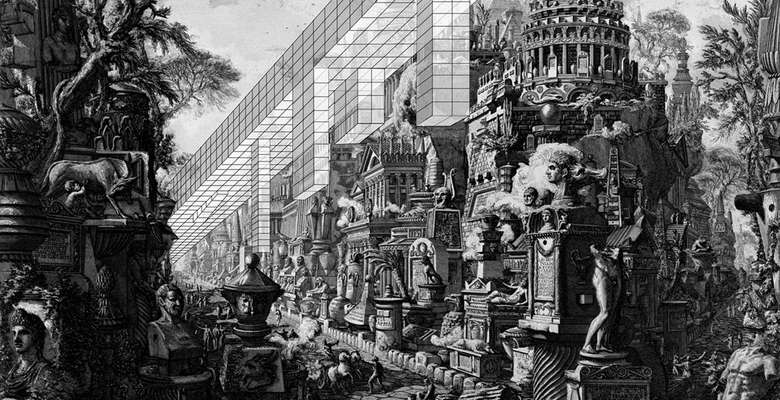
Rome is the eternal city. Well known by the world. We want to say that from 1762, the year of publication of the Campus Martius plant by Piranesi, the city lives like an imaginary infrastructure, a kind of archaeological amusement park, mass tourism destination and not only unsuitable but antithetical to be planned.
For this reason it is the symbol of the emptiness of the idea of the city, represented by its priceless historical heritage.
Rome is the reflection of the city and this is the fate of all the cities of the world: to maintain and revitalize their own image. For this reason it is proposed an exemplary project, the construction of a parallel city, flying, ephemeral and changeable that fits the historical, eternal and unchanging. As an infrastructure in the sky, like Yona Friedman’s ‘Ville Spatiale’, this raised the city will be the last monument to architecture, prehistoric art consecration to build cities. (photo collage source: Piranesi engraving “Appian way”, 1756)
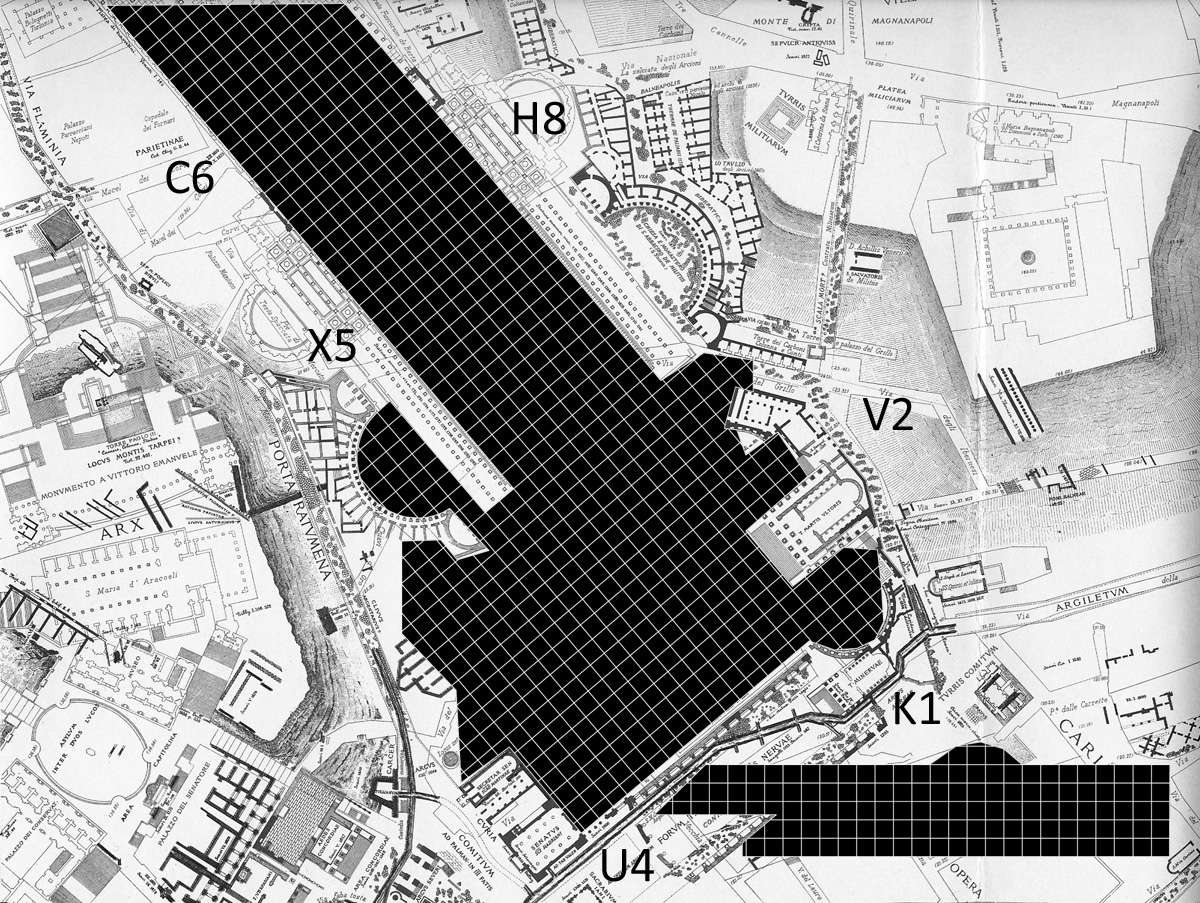
Study plan for an ephemeral infrastructure over the central archaeological area (photo collage source: plate 22 of the Forma Urbis Romae by Rodolfo Lanciani, 1893-1901).

Tourist tapis roulant (Naples-Rome) near the Roman aqueduct “Felice” passing over the Appia Antica park (photo collage source: Ippolito Caffi, Acquedotti nella campagna romana, 1843).
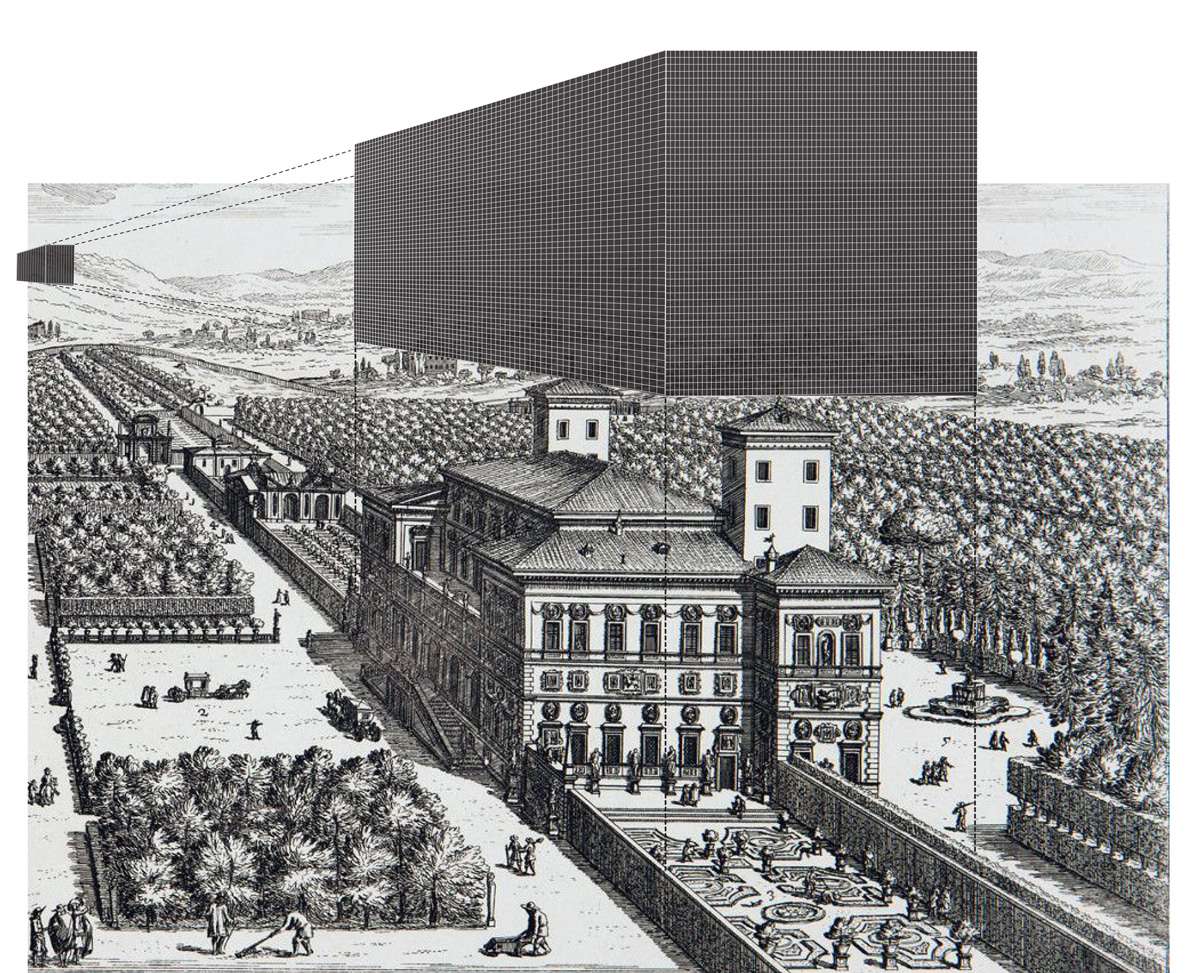
Cube thermostatic flying on the axis Galleria Borghese-Piazzale Flaminio (photo collage source: View of the Villa Borghese, 17th Century).
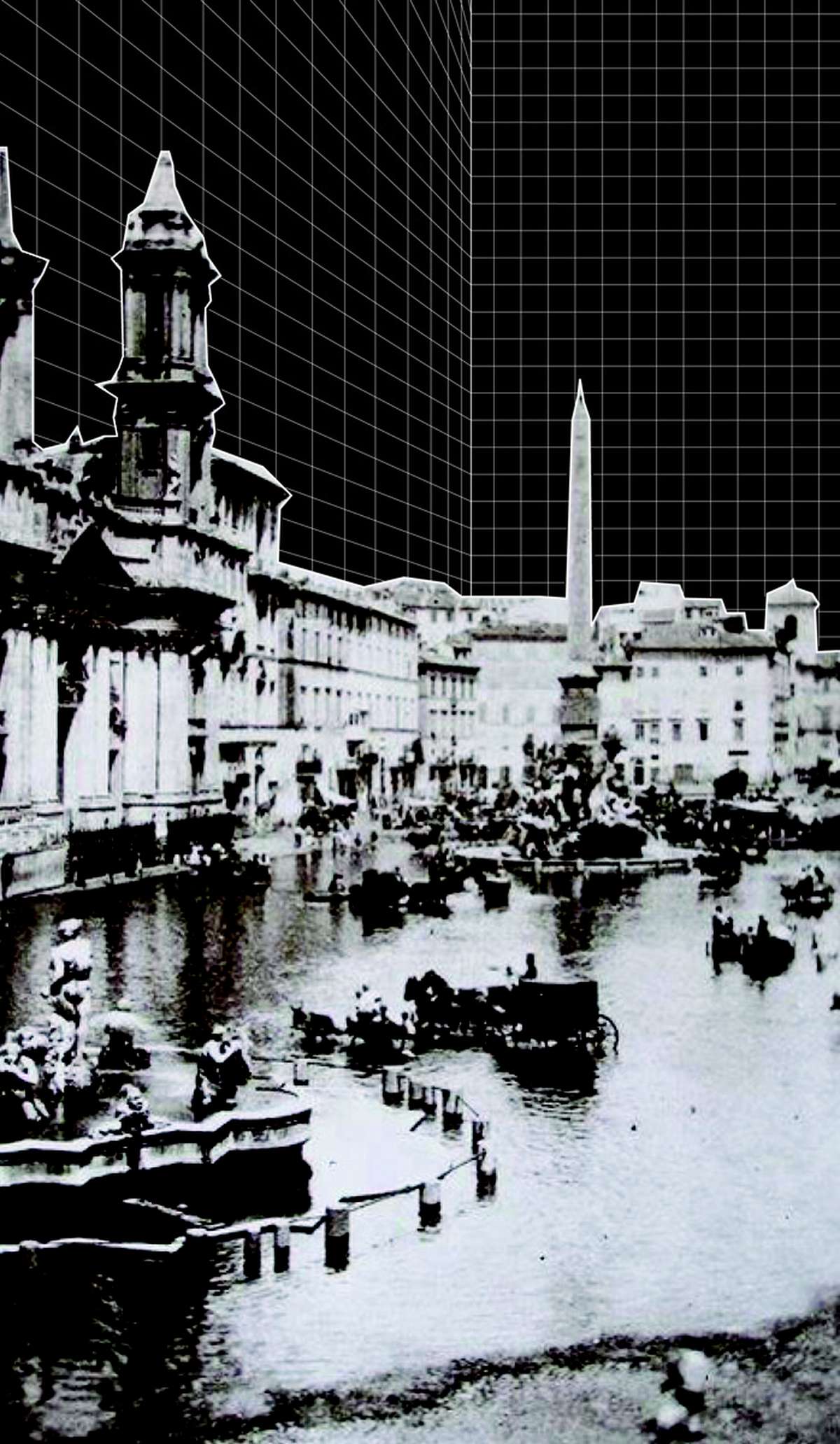
Temporary urban scenes on Piazza Navona (photo collage source: Historical photo of flooded Piazza Navona, 19th Century).
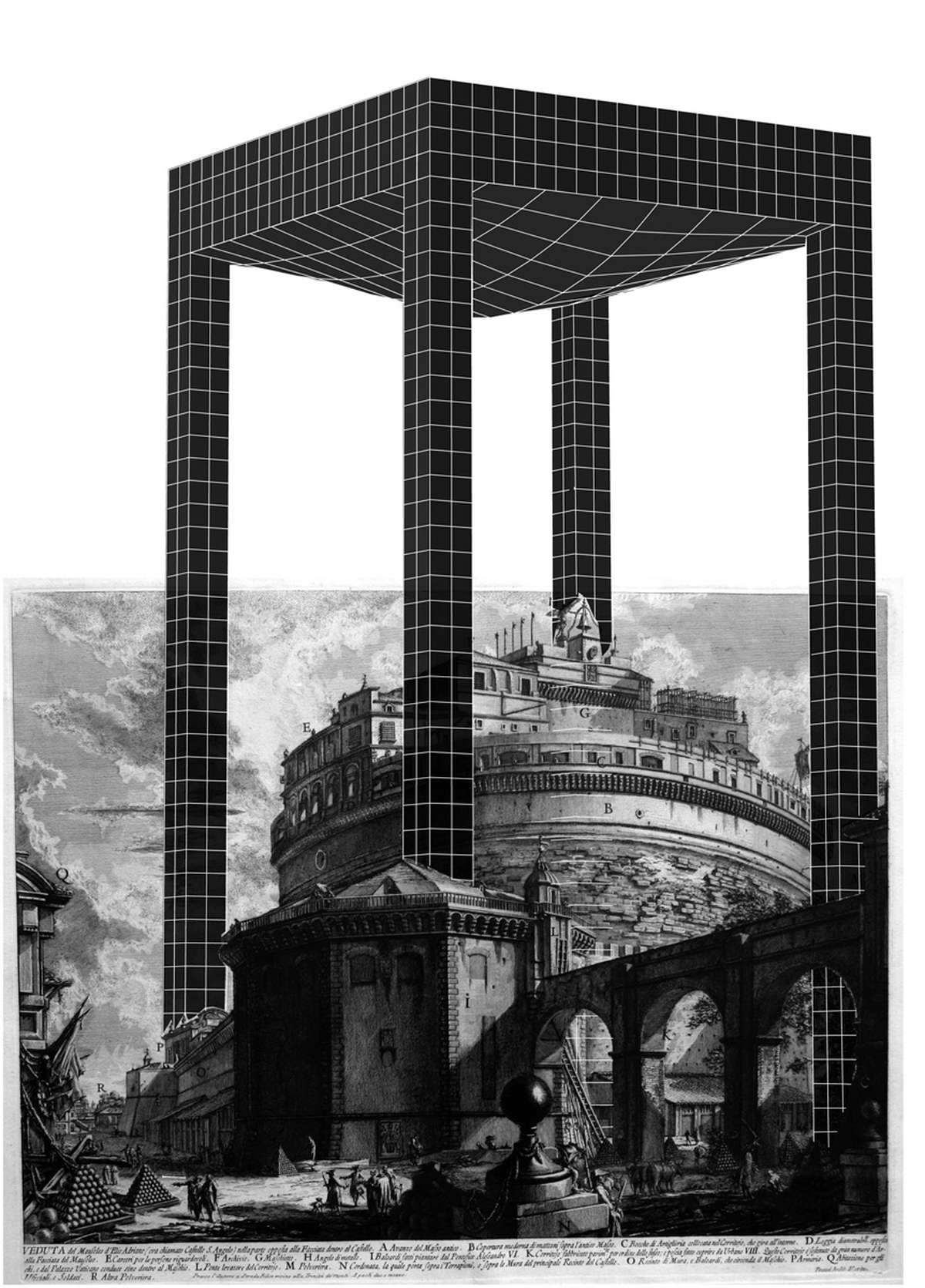
An ephemeral super mausoleum over Castel Sant’Angelo (photo collage source: Piranesi engraving of Castel Sant’Angelo in Rome, before 1778).
Ephemeral eternity©
Ephemeral eternity©

Rome is the eternal city. Well known by the world. We want to say that from 1762, the year of publication of the Campus Martius plant by Piranesi, the city lives like an imaginary infrastructure, a kind of archaeological amusement park, mass tourism destination and not only unsuitable but antithetical to be planned.
For this reason it is the symbol of the emptiness of the idea of the city, represented by its priceless historical heritage.
Rome is the reflection of the city and this is the fate of all the cities of the world: to maintain and revitalize their own image. For this reason it is proposed an exemplary project, the construction of a parallel city, flying, ephemeral and changeable that fits the historical, eternal and unchanging. As an infrastructure in the sky, like Yona Friedman’s ‘Ville Spatiale’, this raised the city will be the last monument to architecture, prehistoric art consecration to build cities. (photo collage source: Piranesi engraving “Appian way”, 1756)
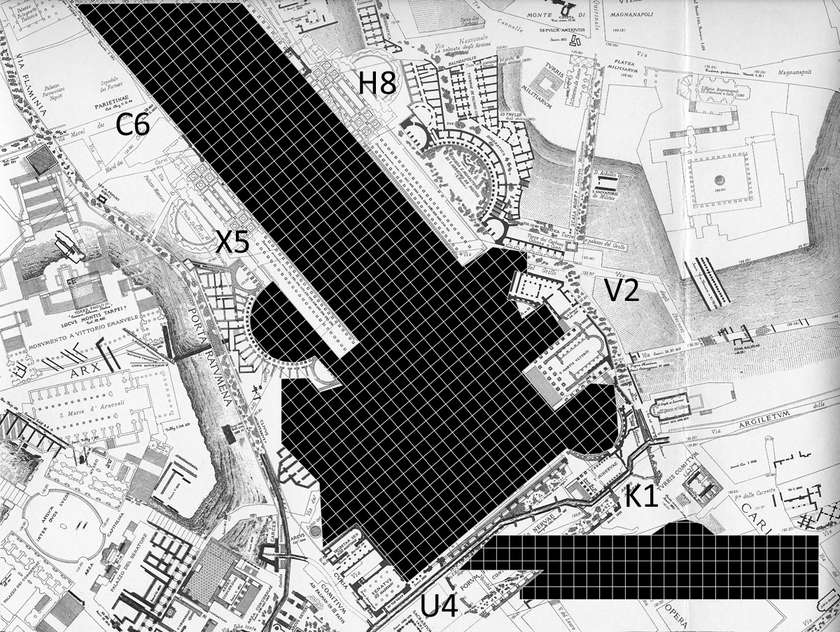
Study plan for an ephemeral infrastructure over the central archaeological area (photo collage source: plate 22 of the Forma Urbis Romae by Rodolfo Lanciani, 1893-1901).

Tourist tapis roulant (Naples-Rome) near the Roman aqueduct “Felice” passing over the Appia Antica park (photo collage source: Ippolito Caffi, Acquedotti nella campagna romana, 1843).
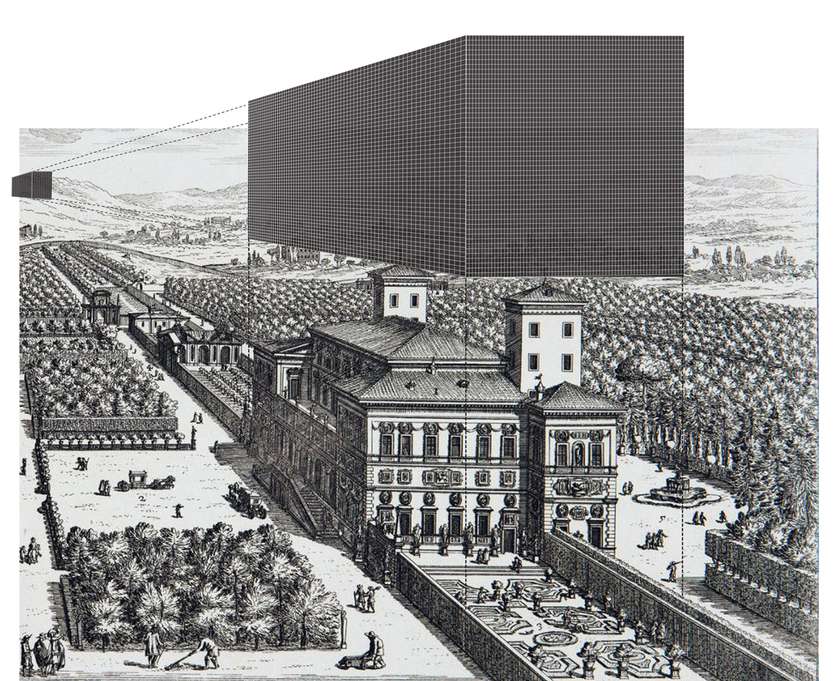
Cube thermostatic flying on the axis Galleria Borghese-Piazzale Flaminio (photo collage source: View of the Villa Borghese, 17th Century).
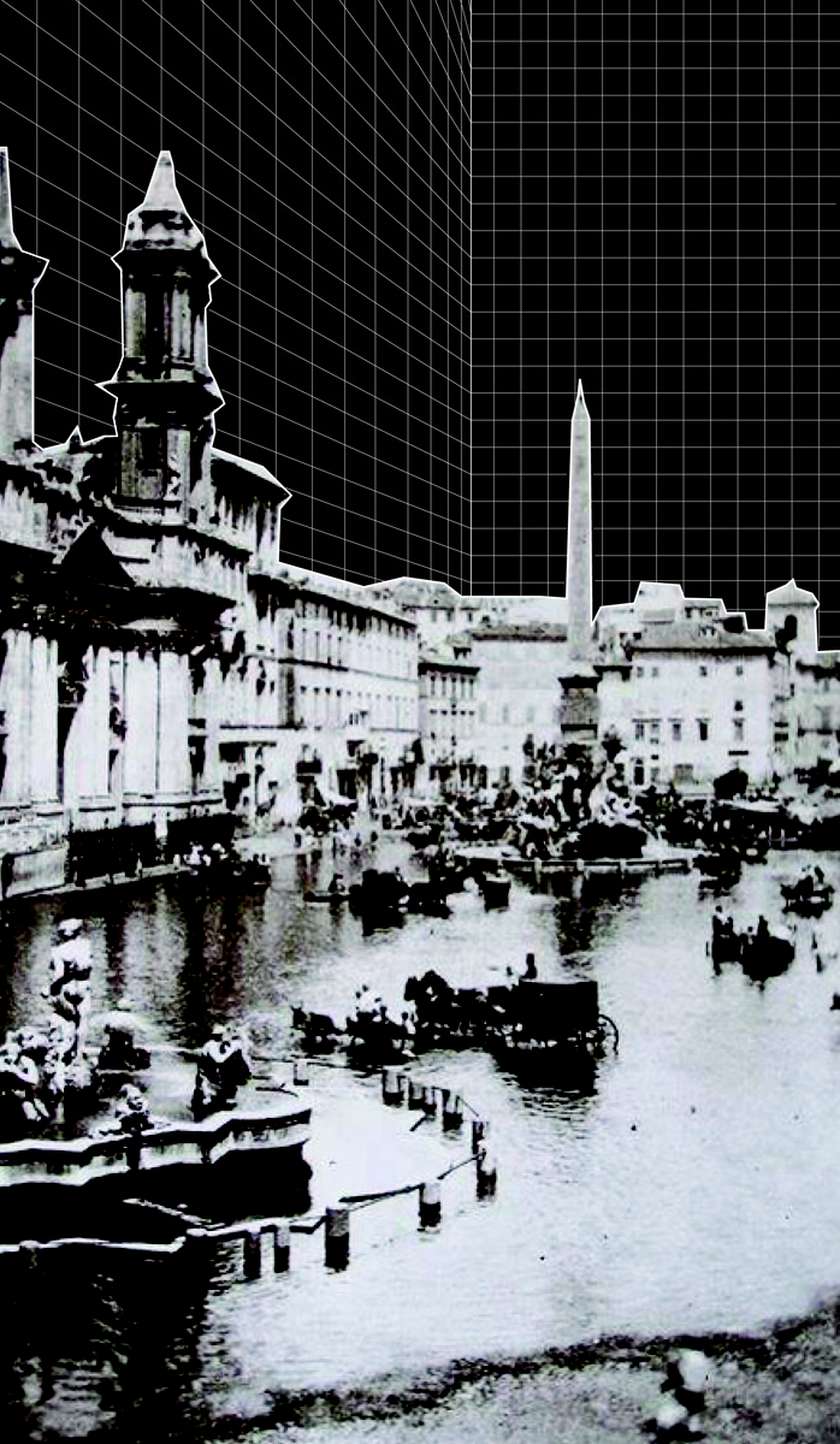
Temporary urban scenes on Piazza Navona (photo collage source: Historical photo of flooded Piazza Navona, 19th Century).

An ephemeral super mausoleum over Castel Sant’Angelo (photo collage source: Piranesi engraving of Castel Sant’Angelo in Rome, before 1778).